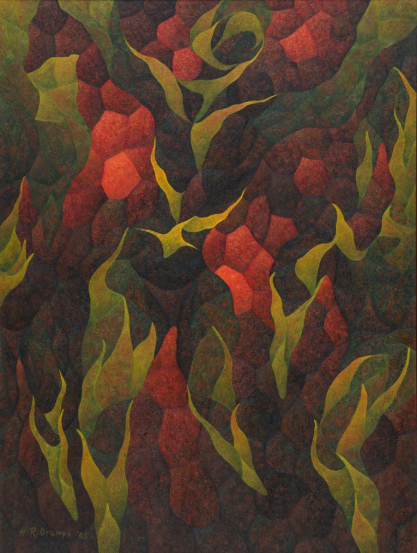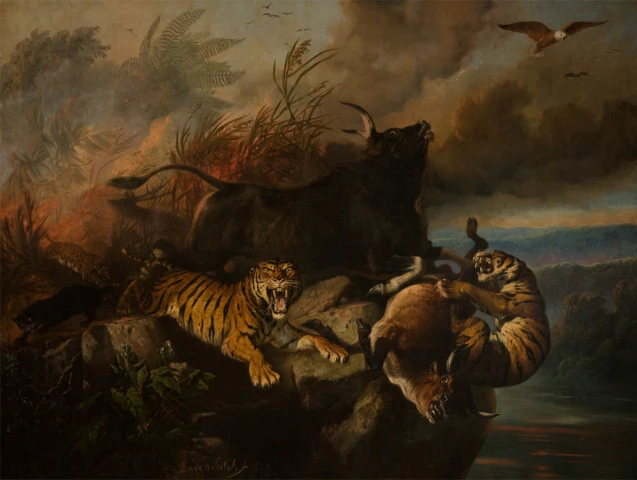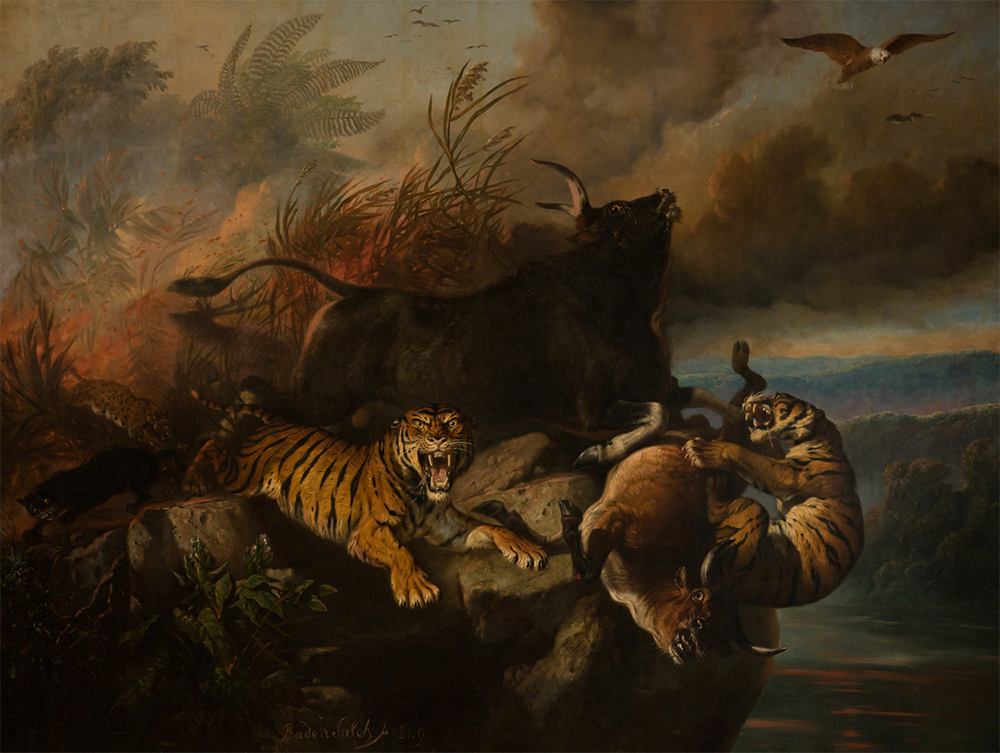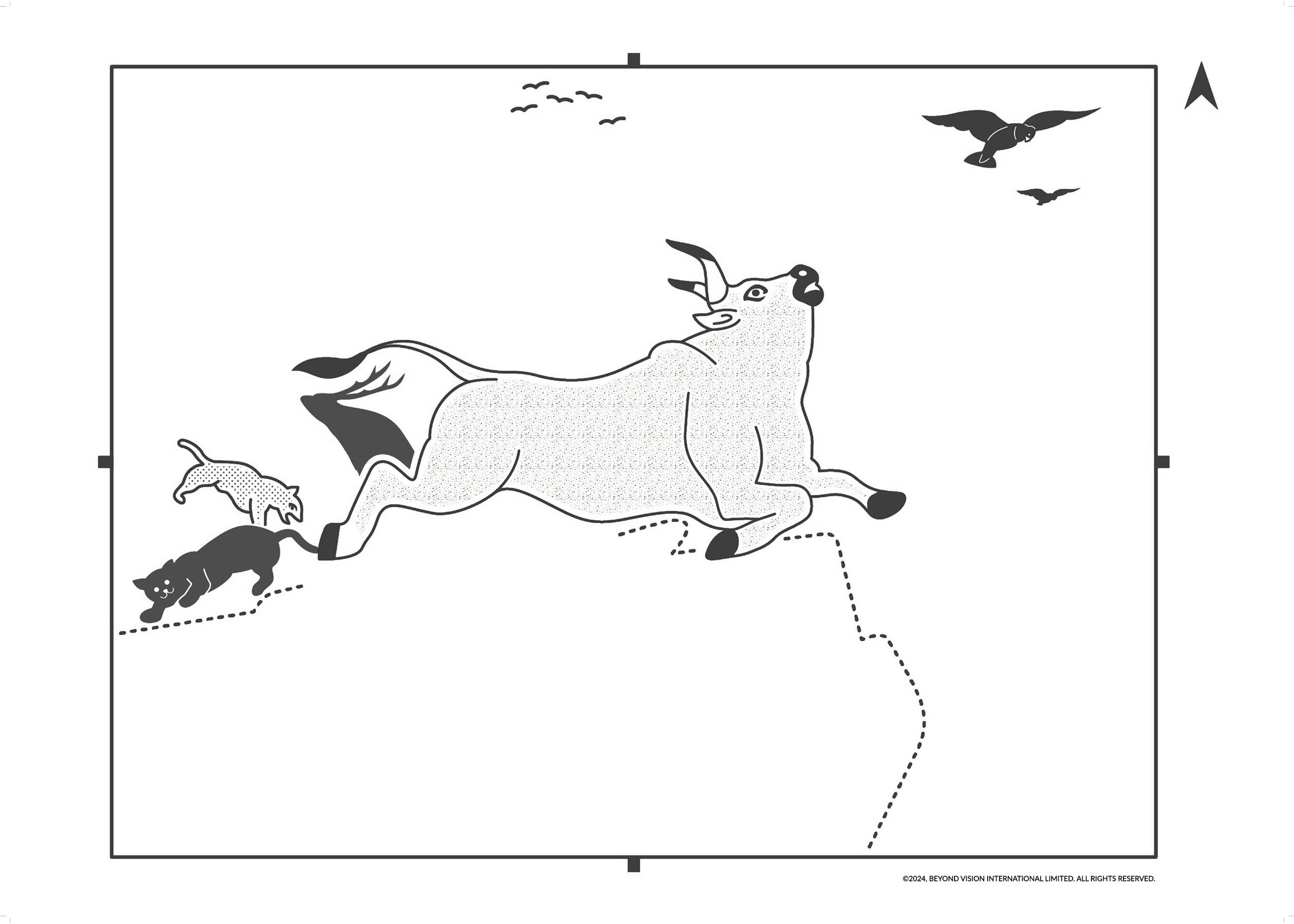Boschbrand (Forest Fire) - Large banteng and smaller animals
Find the directional marker in the three o’clock position and move your finger towards ten o’clock until you come across a rough sandpaper-like texture.
The sandpaper-like texture is a larger banteng. Its broad, black form looms behind the central tiger in the previous layer, mere inches away from the edge of the cliff. Its head is flung back, mouth wide open, as if it is crying out in terror. Draw your finger to the bottom right corner of the sandpaper-textured shape. You’ll find the banteng’s hooves extending outwards, frozen mid-run as one knee crumples to the ground, The thin, dotted line next to the banteng’s hooves marks the edge of the cliff these animals are on.
Underneath the banteng’s tail is the shape of a stag, with its long antlers visible within the burning reeds. Facing left with its head raised, it is likely succumbing to the unforgiving blaze. At the stag’s seven o’clock direction, two smaller animals are also running towards the edge of the cliff. One has a dotted pattern, representing a leopard, while the other has a matte texture, representing a black panther,
Just below the twelve o’clock directional marker, five small wave patterns represent distant birds flying past. As you move your finger to the upper right of the painting, you’ll find two Brahminy kites soaring high up in the air, away from the fire. These eagles are commonly found in Southeast Asia and have white heads and chests with brown wings.
Let’s learn more about the scene these animals are fleeing from. Flip to the next layer.








-min 1.png)

